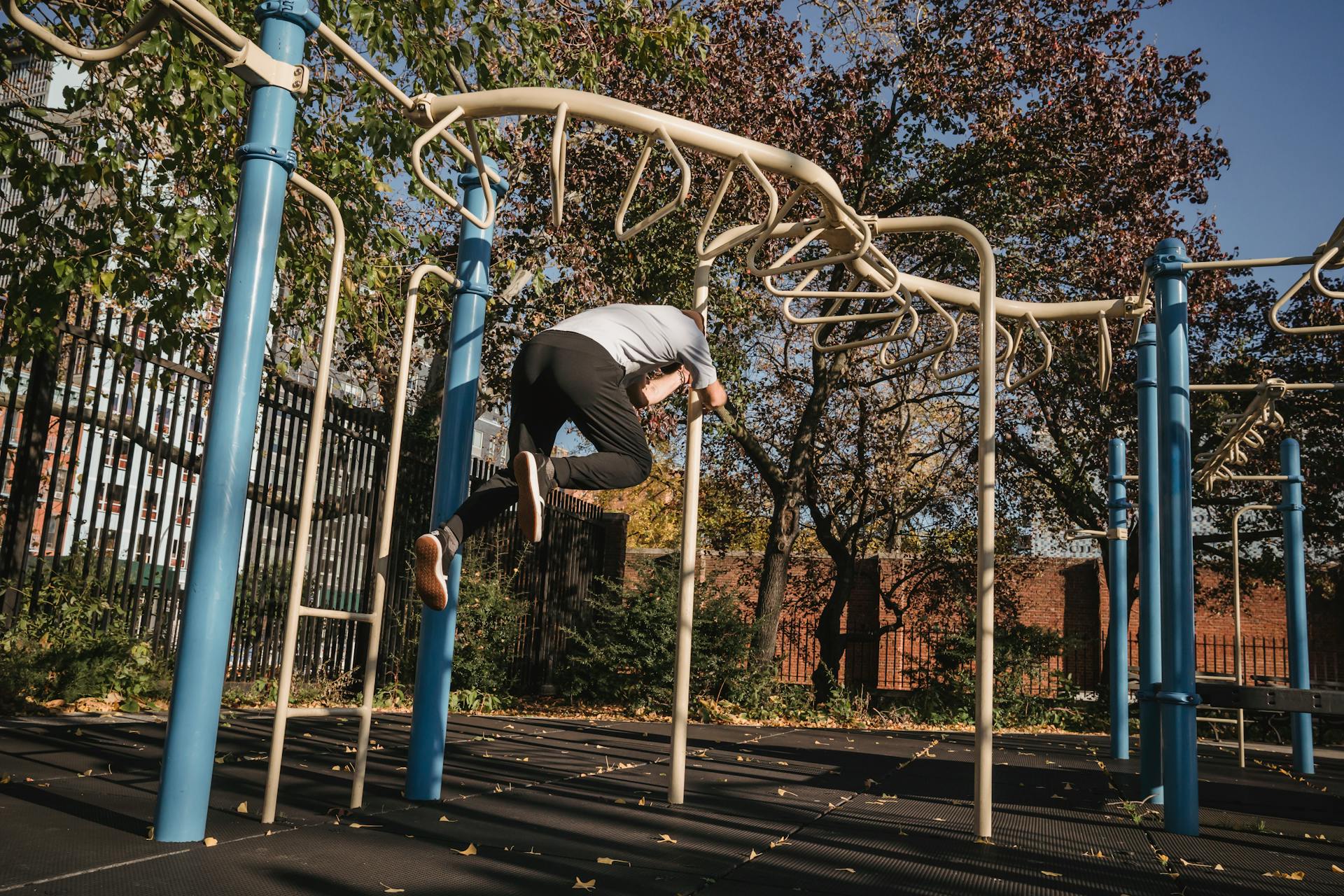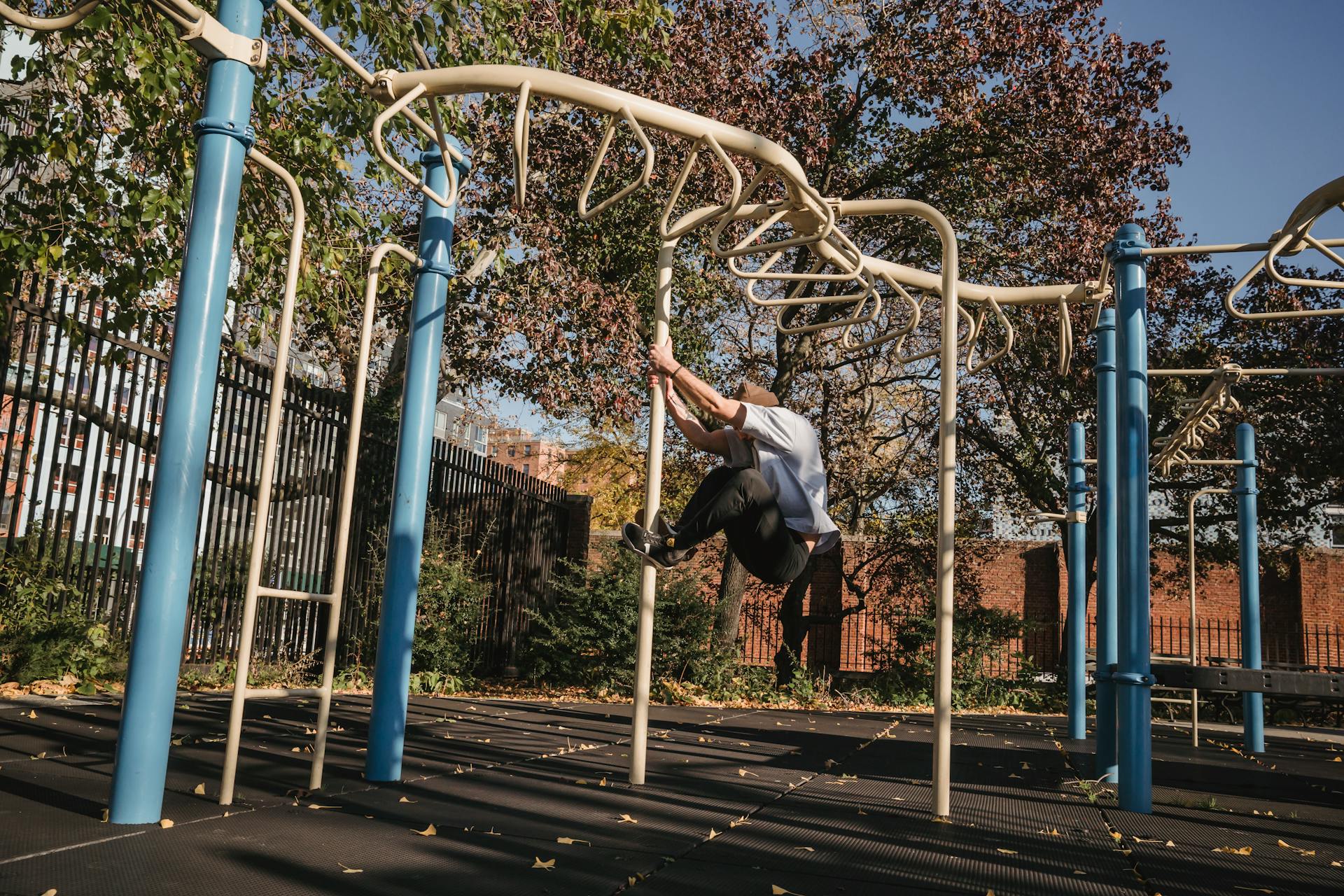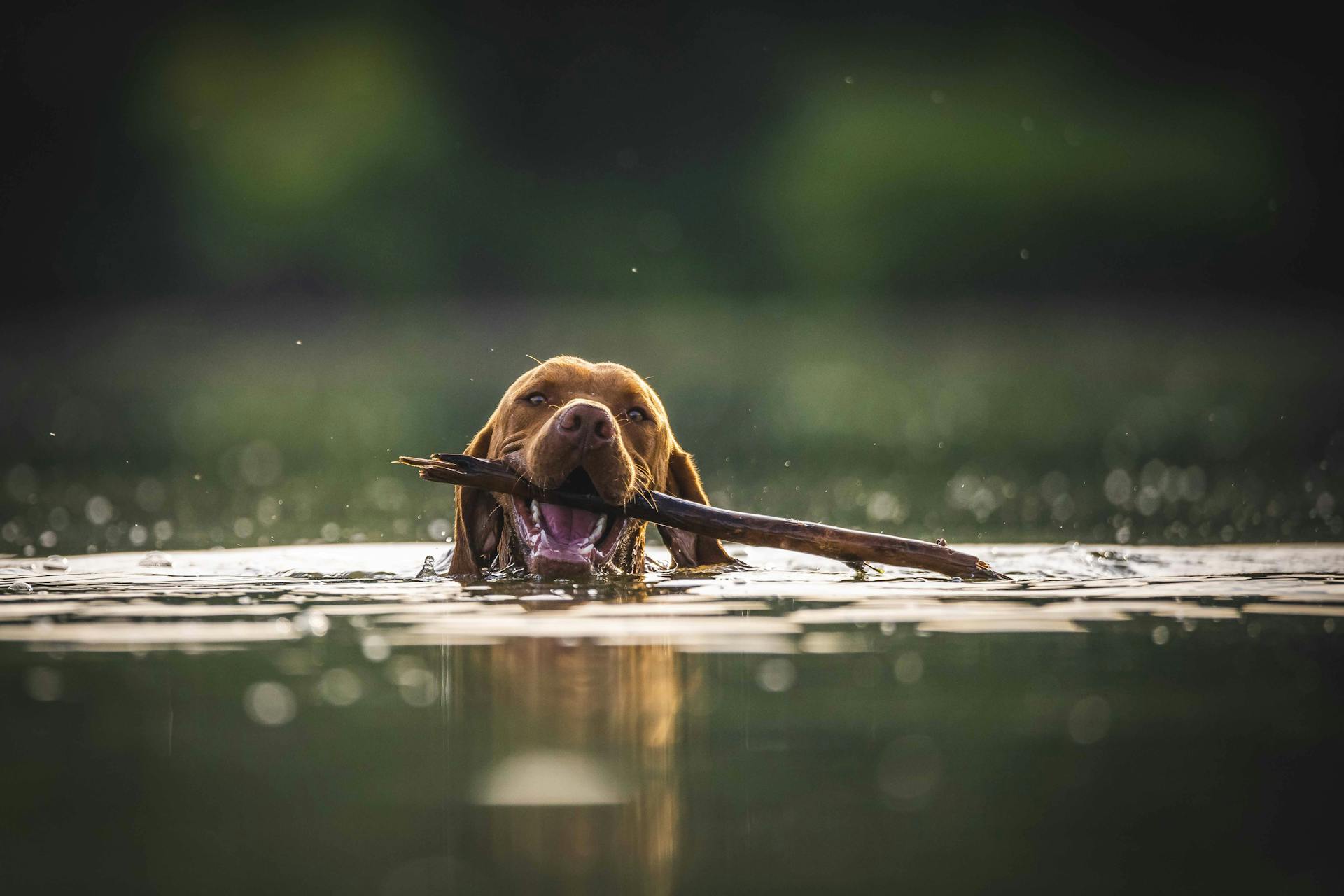
The flirt pole is a fun and engaging way to exercise your dog. It's a long, lightweight pole with a lure attached to the end, designed to mimic prey.
A flirt pole is typically made of a lightweight material, such as nylon or fiberglass, and can be adjusted in length to suit different dogs and exercises.
Using a flirt pole can help increase your dog's energy expenditure and cardiovascular fitness, making it an excellent addition to their exercise routine.
What Is the Flirt Pole?
The flirt pole is a fun and interactive dog toy that's perfect for a game of fetch. It's essentially a long pole with a lure or toy attached to the end.
A flirt pole typically ranges in length from 6 to 12 feet, making it easy to tease your dog from a distance.
The lure or toy at the end of the pole is usually a piece of fabric, a feather, or a small toy that's designed to entice your dog to chase it.
Using a flirt pole is a great way to provide your dog with exercise and mental stimulation.
Using a Flirt Pole
Dogs that enjoy running, jumping, and chasing are perfect candidates for flirt pole exercises.
The owner or trainer holds the pole and moves the rope and lure through various motions to engage the dog's prey drive. This can be done by standing in one place and rotating to swing the pole around in a circle.
To create an effect of an animal running or an object escaping, swing the pole while dragging the lure along the ground. This will encourage the dog to run to chase the lure.
By snapping the pole, the trainer can cause the lure to change directions quickly, enticing the dog to follow. Jerking or swinging the pole higher so the lure is in the air will entice the dog to jump while attempting to catch the object.
To prevent the dog from catching the lure too easily, the trainer can move the pole faster, snap the pole to change directions, or swing the lure in the air, just out of the dog's reach.
Recommended read: How to Become a Dog Trainer for Service Dogs
Occasionally, the dog will catch the lure, and this is a necessary part of the exercise. It's essential to reward the dog for their hard work to prevent them from becoming distraught and unbalanced.
Here are some ways to maneuver the pole and rope to make the lure move like a small animal:
- Move the pole in a circle to create a wide, fast-moving lure.
- Drag the lure along the ground to create an effect of an animal running.
- Snapping the pole to change directions quickly.
- Swinging the pole higher to entice the dog to jump.
Remember to give the dog a command to release the lure and may resume swinging the pole or end the session.
Training Your Dog
Training your dog with a flirt pole can be a fun and effective way to combine exercise and training. A good foundation in a behavior is essential before using a flirt pole, as dogs can get overexcited and have a harder time responding to cues.
You'll want to get a solid foundation on a behavior first, so your dog can focus on what you're asking them to do. This will make it easier for them to respond when you have their favorite toy out.
It's essential to let your dog have the toy almost immediately after they go into the desired position, especially at first. If they don't get what they want right away, they may decide that you aren't going to pay up, and then stop responding to your requests.
After a minute or two of letting them chase the toy, you would grab the toy and remove it from play, and then ask for another behavior, like a sit.
Safety and Health
Flirt pole exercises are a great way to improve your dog's physical and mental health, but it's essential to consider their safety and health.
Flirt pole exercises can help strengthen heart and lung function, improve balance, and fine-tune motor skills.
However, it's crucial to remember that flirt pole exercises are not suitable for all dogs, especially those that are not in good health.
Dogs under a year old, as well as those with joint problems, heart problems, or obesity, should not participate in flirt pole exercises.
Readers also liked: Clever Canine Dog Training
This is because these dogs may be more prone to muscle and joint injuries, especially if jumping is involved, which can result in poor landings and injury.
Additionally, over-exertion can be a risk if your dog is not physically conditioned for the activity.
To avoid these risks, it's essential to start with gentle and controlled exercises and gradually increase the intensity and duration as your dog becomes more comfortable and conditioned.
Intriguing read: Conditioned Emotional Response Dog Training
Breeding and Lure Coursing
Using a flirt pole is a great way to encourage high prey drive in dogs, especially for activities like lure coursing. This is because the moving of a rag on the end of the pole mimics the movement of prey, which triggers the dog's natural instinct to chase.
For professional breeding, starting early stimulation and socialization is key, especially for working dogs. This helps create dogs with solid temperaments and good social skills.
Some professional breeders use flirt pole skill exercises as part of their puppy conditioning to create acceptable outlets for prey drive. This decreases the likelihood of puppies using their prey drive in an inappropriate manner.
Early socialization is crucial for puppies, and using a flirt pole can be a valuable tool in this process.
Discover more: Dog Training Socialization
The Joy of Play
Flirt poles are a great way to combine exercise with play and training, using your dog's natural predatory behaviors. This can be especially effective in getting your dog's attention and making training sessions more engaging.
It's essential to get a good foundation on a behavior before introducing the flirt pole, as dogs can get overexcited and have a harder time responding to cues. Prior training in other situations can make a big difference in their ability to respond when their favorite toy is involved.
Letting your dog have the toy almost immediately after they respond to a cue is crucial, as this reinforces the behavior and keeps them engaged.
Dog Play Styles
Dogs have a strong predatory disposition that influences their play styles. This means they have a natural instinct to chase and pursue prey.
Their behavior is often triggered by the first part of the predatory motor pattern, which is why you might see a dog chasing a rabbit or bringing a ball back repeatedly.
This pattern is strong in many dogs, and being mindful of it can help you find ways to give your dog exercise that's safe and fun for them.
For example, if you're using a flirt pole, it's a good idea to keep the toy on the ground for puppies and young dogs to prevent them from doing too much jumping.
The Joys of Play
Using a flirt pole is a great way to combine exercise and play with training, as it taps into your dog's natural predatory behavior.
Dogs tend to get overexcited when using a flirt pole, so it's essential to establish a solid foundation in a behavior before introducing the pole.
You can use the flirt pole as a training tool by asking your dog for a behavior, like a down, and then immediately throwing the toy at the end of the pole.
It's crucial to let your dog have the toy almost immediately after they respond to the cue, or they may lose interest in the game.

For example, if you ask your dog for a down and they respond, you can immediately throw the toy and let them chase it for a minute or so.
After letting them chase the toy, you can grab it and remove it from play, then ask for another behavior, like a sit.
Frequently Asked Questions
Are flirt poles worth it?
Yes, flirt poles can be a valuable tool for dog owners, providing an outlet for a dog's prey drive and potentially reducing unwanted behaviors like chasing cats. By engaging your dog in a fun and interactive way, a flirt pole can help channel their natural instincts into a positive and controlled activity.
Are flirt poles ok for dogs?
Flirt poles can be a great way to stimulate dogs, but only when used correctly in a smaller space
Do flirt poles encourage prey drive?
Our experience suggests that flirt poles actually reduce prey drive when used correctly, contrary to common belief. Proper technique is key to achieving this outcome.
What age can dogs use a flirt pole?
Dogs under one year of age should not use a flirt pole due to their growing bones. It's best to wait until they're a bit older for safe play.
Is a flirt pole mentally stimulating?
Yes, a flirt pole is mentally stimulating for dogs, engaging their natural prey drive and encouraging problem-solving and critical thinking. This mental stimulation complements physical exercise, promoting a fun and engaging workout for your dog.
Featured Images: pexels.com
